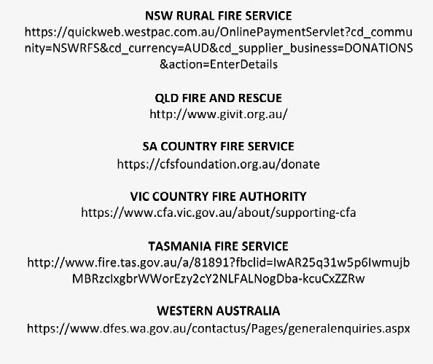
3 minute read
of animal conservation Celebration
from Balkan Beats 30
by Mert Caliskan
The biggest threats to wildlife are habitat loss, overgrazing, farming and urbanization/development. Habitat loss contributes to an eighty per cent loss of biodiversity. It is estimated that twenty per cent of the world’s species could be dead within the next thirty years. Nevertheless, in this article we are not going to focus just on the bad news but we are going to see also some amazing news for the biodiversity conservation in 2019.
Advertisement
1 Seven eggs of the world’s last two remaining white rhinos were successfully fertilized! This may save the species! Scientists have successfully fertilized eggs taken from two female northern white rhinos, a year after the last remaining male died. The procedure has raised hopes about saving the highly endangered animals.. “We expect some of them will develop into an embryo,” said Cesare Galli, a founder of the Italian assisted-breeding company. The team used frozen sperm that had been harvested from two male northern white rhinos before they died. This is the next critical step in hopefully creating viable embryos that can be
Northern white rhinos
source: The happy broadcast
frozen and then later on transferred to southern white rhino surrogate mothers. Veterinarians and wildlife experts are hoping to use a surrogate mother rhino, as the two female northern white rhinos are unable to carry a pregnancy.
Source: https://www.dw.com/en/scientists-fertilize-eggsfrom-last-northern-white-rhinos/a-50167040 2 Norway refuses to drill for billions of barrels of oil in the Arctic, leaving whole industry surprised and disappointed. The largest party in Norway’s parliament has delivered a significant blow to the country’s huge oil industry after withdrawing support for explorative drilling off the Lofoten Islands in the Arctic, which are considered a natural wonder. The move, by the opposition labour party, creates a large parliamentary majority against oil exploration in the sensitive offshore area, illustrating growing opposition to the polluting fossil fuel, which has made the country one of the world’s most affluent.
Source: https://www.independent.co.uk/environment/norwayoil-drilling-arctic-ban-labor-party-unions-a8861171.html
3 Sea Turtles Are Making a Huge Comeback Back in 1973, out of concern that many of America’s animals were in danger of extinction, congress passed the endangered species act. The law enables regulators to designate species as either “endangered,” meaning that they’re at risk for becoming extinct throughout at least a significant portion of their range, or “threatened,” meaning that they’re likely to become endangered in the near future. Once animals are on the list, they can’t be harmed and their habitats can’t be modified or damaged in a way that kills, injures or impairs their ability to breed, feed, take shelter or perform other functions necessary for existence. Sea turtles, in particular, benefited from the law, with their populations increasing by 980 per cent.
Source: https://animals.howstuffworks.com/endangered-species/sea-turtles-are-making-huge-comeback-thanks-to-endangered-species-act.htm 4 Canada passed a bill that makes it illegal to keep whales, dolphins and porpoises in captivity for entertainment Canada’s House of Commons passed a bill to make it illegal to hold a whale, dolphin or porpoise captive, punishable by fines up to $150,000. It’s known colloquially as the “Free Willy” bill, named after the 1993 movie in which a young boy frees a killer whale from a US amusement park. “Nothing fantastic ever happens in a hurry. But today we celebrate that we have ended the captivity and breeding of whales and dolphins. This is news to splash a fin at,” animal rights group Humane Canada said in a tweet.
Despite these good news, 2019 ended with a terrible news for the environment and biodiversity. Australia has suffered the most devastating fires on its history. Although Australia has always had bushfires, this season has been a lot worse than normal. So far, more than 10 million hectares of Australian land has been burned. It’s been estimated that around 1.25 billion animals have been killed across Australia to date. This includes thousands of koalas and other iconic species such as kangaroos, wallabies, kookaburras, cockatoos and honeyeaters burnt alive, and many thousands more injured and homeless. Administrators of the states that fight the most fires also need help. The country will need donations not only to combat fires but also to restore the lives of those who survived the fires and to rehabilitate areas destroyed by fires.
And you can check the all fires in Australia: https://google. org/crisismap/australia

Source: https://edition.cnn.com/2019/06/10/americas/canada-whale-dolphin-bill-intl-hnk/index.html
If you want to show your support by donating, above are links to the local state fire services source: Pink’s Twitter






